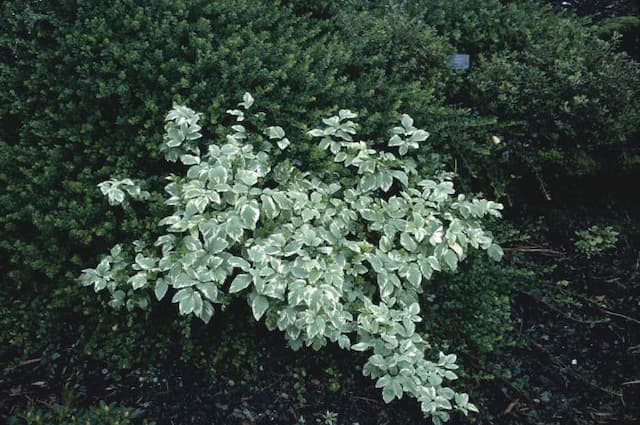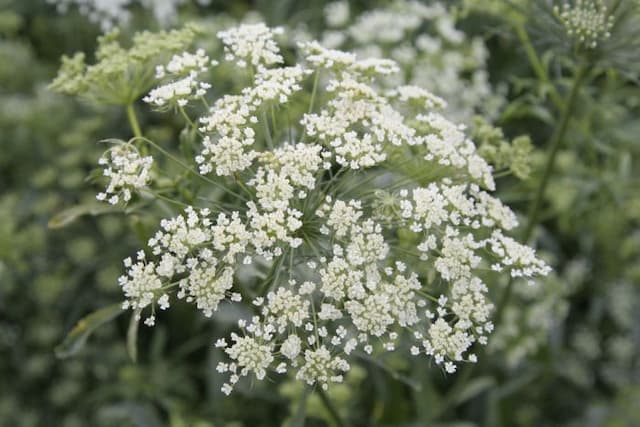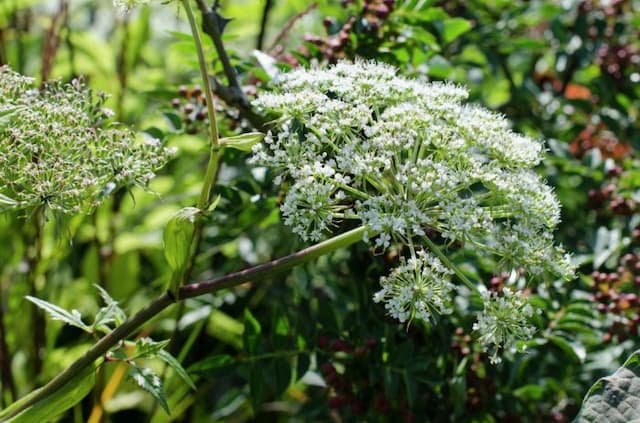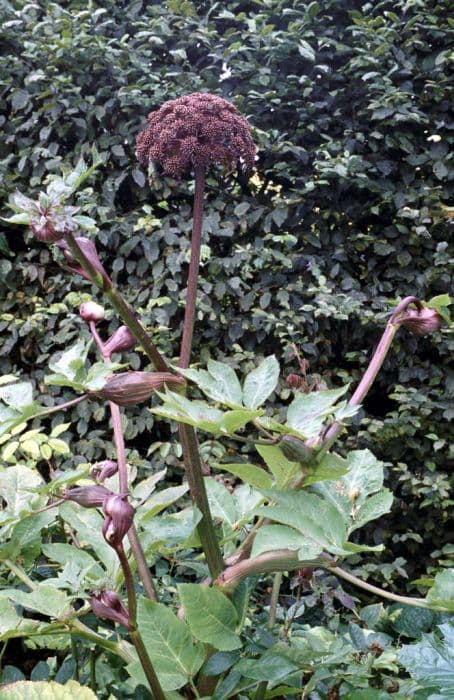Parsley Petroselinum crispum 'Moss Curled'

ABOUT
The plant commonly known as the curly parsley features vibrant green leaves that are deeply cut and finely divided. The leaves have a uniquely ruffled or curled appearance which gives this variety its name. The rich green color of the leaves is accentuated by the intricate, curled edges that add both visual interest and texture to the foliage. The leaves emerge from slender, branching stems that sprout from the base of the plant. Curly parsley is often used as a garnish or decorative element on plates due to its attractive, ornate leaf structure. As a biennial plant, it can produce small, yellow-green flowers arranged in clusters after completing its first growing cycle, although its culinary use focuses primarily on the lush, curly foliage which is known for its fresh, slightly peppery flavor.
About this plant
 Names
NamesFamily
Apiaceae
Synonyms
Curly Parsley, Curled Parsley, Moss Curled Parsley
Common names
Apium crispum, Petroselinum sativum, Carum petroselinum, Petroselinum hortense.
 Toxicity
ToxicityTo humans
Parsley is not toxic to humans when consumed in typical food quantities. It is commonly used as an herb in cooking and garnishing and is safe for most individuals. However, eating extremely large amounts of parsley can cause side effects due to the presence of compounds such as furanocoumarins and apiol. Symptoms of poisoning from excessive consumption can include anemia, liver or kidney problems, and photosensitivity, but such cases are rare and typically associated with ingesting very large quantities or using essential oils improperly. Pregnant women should avoid consuming high doses of parsley as it can stimulate the uterus and might lead to preterm labor.
To pets
Parsley in small amounts can be safe for pets like dogs, but caution should be exercised as large quantities can lead to toxicity. If a pet ingests a large amount of parsley, it could potentially experience symptoms of toxicity due to compounds such as furanocoumarins and apiol. The signs of parsley poisoning in pets may include gastrointestinal upset, changes in urination, photosensitivity, and in severe cases, organ damage. Pet owners should closely monitor their animal’s intake of parsley and consult a veterinarian if a large amount has been consumed.
 Characteristics
CharacteristicsLife cycle
Biennials
Foliage type
Evergreen
Color of leaves
Green
Height
1 foot (30 cm)
Spread
1 foot (30 cm)
Plant type
Herb
Hardiness zones
5
Native area
Mediterranean
Benefits
 General Benefits
General Benefits- Culinary Uses: Petroselinum crispum 'Moss Curled', commonly known as curly parsley, is widely used as a garnish and flavor enhancer in a variety of dishes, from soups to salads.
- Nutrient-Rich: Curly parsley is a good source of vitamins A, C, and K, as well as minerals like iron and potassium.
- Garden Aesthetics: With its lush, green, curly leaves, this variety of parsley is often used to add texture and vibrant color to gardens and landscapes.
- Companion Planting: Curly parsley can be beneficial in a garden as a companion plant, helping to attract beneficial insects and potentially improving the growth of nearby plants.
- Low Maintenance: Being a hardy herb, curly parsley is relatively low maintenance, making it a suitable plant for both novice and experienced gardeners.
- Edible Landscaping: Curly parsley can be used in edible landscaping, providing both aesthetic appeal and culinary use.
- Soil Improvement: Like many herbs, curly parsley can help improve soil quality by adding organic matter through its root system and leaf fall.
- Herb Gardening: It is an ideal plant for herb gardens due to its versatility, ease of growth, and common usage in culinary practices.
 Medical Properties
Medical Properties- Rich in Vitamin C: Parsley, including the 'Moss Curled' variety, is high in vitamin C, which supports immune system function.
- Diuretic effects: Traditional use of parsley suggests it may help in reducing water retention and swelling.
- Aids digestion: Parsley has historically been used to promote digestive health and relieve gastrointestinal discomfort.
- Antioxidant properties: Parsley contains antioxidants like flavonoids and carotenoids that may help protect against cellular damage.
- Breath freshener: Chewing parsley can help freshen breath due to high chlorophyll content.
- Anti-inflammatory: Parsley may possess anti-inflammatory properties that could benefit certain inflammatory conditions.
- Menstrual aid: It has been traditionally used to help regulate menstrual cycles due to its emmenagogue effect.
- Vitamin K content: As a source of vitamin K, parsley may support bone health.
 Air-purifying Qualities
Air-purifying QualitiesThis plant is not specifically known for air purifying qualities.
 Other Uses
Other Uses- Decorative garnishes: Moss Curled parsley is commonly used to add aesthetically pleasing greenery to dress up plates and dishes in culinary presentation.
- Natural dye: The bright green leaves of parsley can be used to create a natural dye for fabrics or other materials.
- Companion planting: Gardeners often plant parsley near roses and tomatoes, as it is believed to enhance their growth and flavor.
- Insect repellent: Parsley has properties that can repel certain insects, making it useful to plant in gardens for natural pest control.
- Digestif in cuisines: Parsley is often used as a digestif due to its fresh, crisp taste that can cleanse the palate after meals.
- Flavor enhancement: Beyond its role as a garnish, parsley is used in cooking to enhance flavors, particularly in sauces, soups, and stews.
- Odor neutralizer: Chewing fresh parsley can help neutralize strong odors, such as garlic or onion breath.
- Decoration in arts and crafts: Dried parsley leaves can be used in crafting, such as in pressed flower art or to create natural wreaths.
- Soil nutrient enricher: Parsley can enrich the soil with nutrients, including iron, when left to decompose naturally in the garden.
- Seed attractant for wildlife: Parsley flowers can attract beneficial insects and birds when allowed to go to seed.
Interesting Facts
 Feng Shui
Feng ShuiParsley is not used in Feng Shui practice.
 Zodiac Sign Compitability
Zodiac Sign CompitabilityParsley is not used in astrology practice.
 Plant Symbolism
Plant Symbolism- Celebration: Parsley, especially when used in cooking or as a garnish, is associated with festivity and joyous occasions.
- Death and Mourning: In history, parsley was often associated with death and used in funerary rites; it was believed to belong to the dead.
- Protection: Parsley is thought to have protective properties and was used to ward off evil spirits and misfortune in ancient times.
- Strength: Due to its resilient nature and ability to thrive, parsley symbolizes strength and persistence.
- Purification: It's said to have purifying properties, both for the body as a detoxifying agent and in spiritual practices to cleanse and protect.
 Water
WaterParsley, commonly known as 'Moss Curled' parsley, should be watered regularly to keep the soil consistently moist but not waterlogged. It generally requires watering once a week, but this frequency may need to increase during hot, dry periods to maintain moisture. Depending on the size of the plant and the environmental conditions, each watering session should deliver enough water to wet the soil thoroughly; approximately 1 to 2 gallons for an outdoor garden bed or 8 to 16 onzes for potted parsley. Overwatering or allowing the soil to remain waterlogged can lead to root rot, so it is important to ensure that the soil drains well.
 Light
LightMoss Curled parsley thrives best in full sun to partial shade. The ideal spot for this herb is in a location where it can receive at least 6 hours of sunlight daily. While it can tolerate some light shade, especially during the hottest parts of the day, too much shade may cause it to grow less vigorously and produce fewer leaves.
 Temperature
TemperatureMoss Curled parsley prefers temperatures between 50°F and 70°F for optimal growth, but it can survive in temperatures as low as 10°F and as high as 90°F. It is tolerant of a range of temperature fluctuations, but consistently warm temperatures within the ideal range will encourage the best leaf production.
 Pruning
PruningRegularly pruning Moss Curled parsley by harvesting the outer leaves encourages more growth and prevents the plant from becoming leggy. Prune the plant every 2 to 3 weeks, taking care to cut the stems cleanly just above leaf nodes or soil level. The best time for pruning parsley is in the morning when the plant is most hydrated and before it gets too hot.
 Cleaning
CleaningAs needed
 Soil
SoilCurly parsley prefers well-draining soil rich in organic matter with a pH range of 6.0 to 7.0. A good mix can be achieved by combining garden soil, compost, and sand to ensure proper drainage.
 Repotting
RepottingCurly parsley typically does not require frequent repotting and can often be grown as an annual. If grown as a perennial, repot every 1-2 years to replenish soil nutrients.
 Humidity & Misting
Humidity & MistingCurly parsley thrives best in moderate humidity conditions, generally around 40-70%.
 Suitable locations
Suitable locationsIndoor
Place in bright light, keep soil moist, and use well-draining pot.
Outdoor
Plant in full sun to part shade and water regularly.
Hardiness zone
5-9 USDA
 Life cycle
Life cycleThe Parsley 'Moss Curled' (Petroselinum crispum 'Moss Curled'), begins life as a seed, typically sown directly into moist, fertile soil in spring after the last frost or in early fall. Germination occurs within 14-30 days, depending on soil temperature and conditions. Upon emergence, seedlings develop into a basal rosette of finely curled, bright green leaves, indicative of this variety. As a biennial, in its first year, Parsley 'Moss Curled' focuses on vegetative growth, producing leaves that can be harvested throughout the growing season. If left to overwinter, in its second year, it will produce a flowering stalk with small, yellow-green flowers, leading to seed formation for reproduction. Following seed set, the plant completes its life cycle and typically dies back.
 Propogation
PropogationPropogation time
Spring to Summer
The most popular method for propagating Parsley, which includes the 'Moss Curled' variety, is through seed. Parsley seeds can be sown directly in the garden or started indoors. The optimal time for sowing is in the early spring, several weeks before the last frost date, or in the late summer for a fall harvest. Indoor sowing should begin 10-12 weeks before the last frost, with seeds sprinkled on the surface of a well-draining soil mix, lightly covered with soil. Parsley seeds require darkness to germinate, so it's essential they are not too deep. They can take 3-4 weeks to germinate at a soil temperature around 70°F (21°C). Once seedlings emerge and grow strong enough to handle, they can be transplanted into the garden or containers, spacing them 6-8 inches (15-20 cm) apart in an area with full to partial sunlight.









